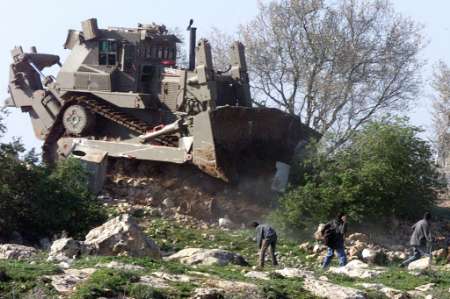January 2006: Hamas wins elections for the Palestinian Legislative Council
To its surprise, Hamas wins the Palestinian legislative elections, taking 76 seats out of a total of 132. Hamas has not planned for such a victory, hoping to a be a vociferous opposition party. Realising they are not ready for government, the party leaders hope a spell in opposition will allow them to maintain their ideological purity and prepare for government in the future.
March 2006: Hamas forms a government
Initially, Hamas hopes to form a unity government with Fatah, but some Fatah leaders believe the best way to get rid of Hamas quickly will be to force it to rule alone. Eventually, Hamas decides to form its own government, seeking out technocrats from its ranks around the world and summoning them to the West Bank and Gaza. However, the international community is loth to accept the democratic choice of the Palestinian people. It insists that Hamas renounce violence, acknowledge the existence of Israel and respect all agreements signed by the Palestinian Authority and the Palestine Liberation Organisation. When Hamas declines, Israel stops all tax transfers to the Palestinian Authority; then the US and other western governments suspend aid. Hamas works to bypass the sanctions, sometimes resorting to smuggling cash in suitcases. But it cannot operate. In addition, Mahmoud Abbas, the Palestinian president, controls the security forces. In the absence of a single source of power, Gaza descends into chaos.
June 2006: Hamas kills two Israeli soldiers and kidnaps a third
At some point in 2006, there is a split in the Hamas movement, and the military wing decides to launch an attack on Israel in an attempt to break the political logjam. On June 25, a group of militants infiltrates Israel via a tunnel and attacks an army post, killing two soldiers and capturing a third, Gilad Shalit, who remains in captivity in Gaza.
March 2007: A national unity government is formed
Israel's attacks on Gaza only increase, and eventually Hamas successfully renews its efforts to look for a national unity government. But the international community rejects the government, and tension between Fatah and Hamas increases.
With Fatah and Hamas fighters engaged in series of tit-for-tat murders, it appears that the US was planning to train Fatah and Palestinian Authority forces to retake Gaza. Mahmoud Abbas's presidential guard is strengthened and given new duties. The guard receives new uniforms and black American jeeps.
June 2007: Hamas attacks and defeats Fatah and Palestinian Authority forces in Gaza
In fact, the aid and training fail to materialise, but the media reports and rumours are strong enough to persuade Hamas's military leaders it must take action against the parts of the Palestinian Authority it felt were actively trying to destabilise it, in particular the so-called preventative security forces associated with Mohammed Dahlan. What starts as a series of clashes turns into a rout. Some Fatah members are brutally killed, and others flee. Hamas suddenly has complete control of Gaza.
The initial brutality and speed of the coup shocks Gaza: drivers begin to drive courteously, families settle longstanding feuds, and the kidnappers holding the BBC journalist Alan Johnston are told by Hamas to give him up immediately - which, eventually (on July 4), they do. Gazans and foreigners all speak of a sense of security, and Hamas officials boast about how quickly they have imposed security where Abbas failed.
June 2007-present:
But the honeymoon is short-lived: Hamas withdraws its police from the streets, and Gaza's roads return to their familiar chaos. Armed groups affiliated with Fatah and Islamic Jihad challenge the Hamas ban on guns, leading to gunfights. Criminal groups begin to gain confidence, and car thefts and kidnappings of Palestinians resume.
Hamas remains the dominant power in Gaza, but Mahmoud Abbas dissolves the government and appoints a new one, headed by Salam Fayad. The new government orders its employees, around 60,000 people, in Gaza not to turn up for work. As Hamas is no longer in government, international aid and tax transfers are resumed to the government in Ramallah, allowing it to pay its employees in the West Bank and Gaza. Meanwhile, Israel increases pressure on Gaza's civilian population by slowly reducing the amount of food it allows into the strip.
Since the coup, Fatah has organised a series of demonstrations against Hamas in Gaza, and health workers affiliated with Fatah have been on strike in protest at the appointment of Hamas members to senior hospital positions.
Despite the friction between the sides, however, Fatah and Hamas officials have expressed the hope that they will re-enter negotiations on unity government, although it is unclear how the international community and Israel will react to the presence of Hamas in government again.
Video
Inside Gaza: medical emergency
Related articles
24.10.2007: Patients caught up in middle of Fatah and Hamas tug of war
24.10.2007: Profiles: Three Gaza groups vying for power
24.10.2007: Background: A tale of two factions
Full coverage
More on Israel & the Middle East
News guide
Israel and Palestinian territories

Nessun commento:
Posta un commento